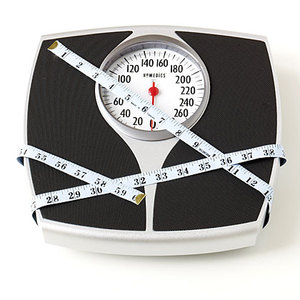By Scott Mowbray, editor of Cooking Light and Sidney Fry, R.D.
Last week a new USDA report says Americans are consuming fewer calories from fat, eating fewer calories in total, eating at home more often, and bumping up fiber intake. We may also be reading nutrition labels more often and more likely to agree that body weight can be controlled by personal eating behavior.
The conclusions come from a deep-dive analysis of nutrition-survey data taken between 2005 and 2010. No way of knowing whether the trends have accelerated or declined since 2010.
The swings aren't huge: Daily calorie intake dropped by 3.4 percent, or 78 calories, which is the equivalent of a couple of bites of a fast food hamburger (fast food as a source of daily calories declined a bit, but is still more than 10 percent of our diet). The amount of calories we get from fat declined by 3.3 percent, while the overall "quality" of both in-home and out-of-home meals "increased."
Small changes, but encouraging, and people responsible for recent federal initiatives like the MyPlate program (which replaced the hopelessly confusing Food Pyramid in 2011) and Let's Move (launched in 2010 and aimed at childhood obesity) are happy to take credit -- though those two initiatives came after the period of the study. Government at every level has been bombarding us with eat-healthy messages for ages. The role of the Great Recession (as government documents are now labeling it) is hard to factor in: It makes sense that people would eat at home more, and perhaps eat less, when there's less money around, but that doesn't mean a tepid recovery will reverse the trends.
At a press conference, Sam Kass , the senior White House nutrition policy advisor, said the report was only one factor among a lot of data points that suggest improvement in the American diet, including evidence that obesity levels may final have plateaued or started to decline. Kass is right: Things finally seem to be moving in the right direction. The pace may be glacial, but let's not get in a funk about that: It took 42 years for smoking rates to decline by half -- a much simpler problem than changing the eating habits of 300 million people, a shocking percentage of whom are obese.
For evidence of change in food itself, you can do a gut check in any decent supermarket. Despite the limitless ability of food companies to manufacture new versions of high-fat, high-salt, high-sugar foods, a lot of the action is around nutrition claims, whole grains, reduced salt, reduced sugar, lower-fat yogurts, fresh produce and the like. This is simply because food companies see profit in responding to changing consumer demands. Meanwhile, farmer's markets are growing, as is the interest in local, handmade foods, these latter trends important because a growing market for "real" food is surely a healthy trend.
In the end, it's hard to pinpoint cause in the behavioral change of a whole population. Change comes from thousands of small nudges, ranging from education programs to clearer labeling to the availability of better-tasting food that doesn't play to the appetite for junk.
Photo: Lee Harrelson
